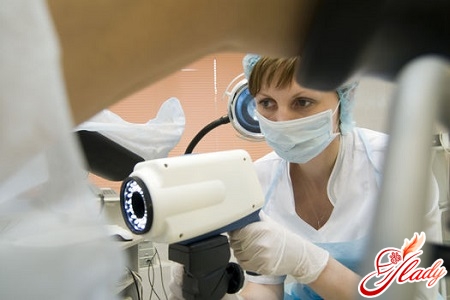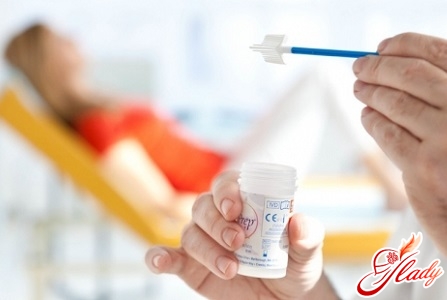
Colposcopy is a modern, highly effective anda safe method of examining the cervix and vaginal walls in order to diagnose various diseases at an early stage. Colposcopy of the cervix is performed using a special instrument called the colposcope. This is a medical optical device equipped with special illuminators and allows to significantly enlarge the image of the object of investigation, which makes it possible to determine and study in detail the place of localization of the pathological process. With the help of this method, it is possible to diagnose benign and malignant formations at the very initial stage, such diseases as leukoplasia and endometriosis, to reveal inflammation, as well as erosion and cervical cancer. Colposcopy can be used to evaluate the effectiveness of a prescribed treatment. The procedure of colposcopy is not painful. During its carrying out, slight discomfort is possible, as in normal examination, but no more. A colposcopy is performed in the gynecological chair, it takes about 10-20 minutes. To expose the cervix, a mirror is used, then with the help of a colposcope the gynecologist examines in detail the cervix and the walls of the vagina.

Types of colposcopy
There are 2 main types of colposcopy: simple and extended. During a simple procedure, a routine examination is carried out, the nature and type of precipitates are determined. Further, the excretions are carefully removed with a dry cotton swab, and with the help of a colposcope, the cervix is examined. Extended colposcopy involves the use of diagnostic tests that help more accurately restrict and examine the pathology of the cervix, determine the nature of the disorder, exclude or confirm cervical cancer, cervical dysplasia (precancerous condition). The most popular tests are: tests using acetic acid, using Lugol's solution (Schiller's test), Hrobaka's test. The last sample is performed if there is a suspicion of a malignant formation, and a uterine probe is used to carry it out. Expanded colposcopy is also painless. It should be noted that colposcopy alone is not sufficient for the final diagnosis. After all, it is aimed only at determining and first studying the zone of greatest damage. For final conclusions and confirmation of primary conclusions, it is necessary to conduct additional studies: cytological studies, targeted biopsy, PAP test. In addition to the basic, there are also the following types of colposcopy: color and luminescence. The color scheme assumes the same procedure as the extended one. The difference is that other dyes are used. The cervix is dyed green or blue, which helps to study the lesions and the vasculature in more detail. Luminescent is used to study and detect cancer cells in the epithelium. The cervix is treated with fluorochromes and is illuminated with UV rays. At the same time, malignant formations differ in color from healthy cells. 
Preparing for colposcopy
Before colposcopy is recommendedat least 2 days to avoid sexual contact. You can not use vaginal suppositories and creams, use tampons, do douche. You can not conduct a survey during menstruation, for this is suitable for any day of the menstrual cycle. Some experts recommend that this study be performed 2-3 days after menstruation. Who and how often should I undergo colposcopy? Each woman is recommended to undergo an examination of the gynecologist at least once a year. The procedure of colposcopy can be performed during a preventive examination on the recommendation of a doctor. Colposcopy is recommended for women who are shortly planning a pregnancy in order to avoid problems associated with difficulties in gestation and premature birth. On the recommendation of a doctor, this examination can be performed during pregnancy. It is strongly recommended that women undergo colposcopy after 45 years of age. During climacteric changes, the greatest likelihood of cancer. It is very important timely detection of the problem. After the colposcopy procedure, minor discharge from the vagina may be noted. This may be due to the use of medical dyes. Therefore, it is recommended to take a sanitary napkin for inspection. Other consequences of this examination should not be. Colposcopy - the procedure is harmless and safe. However, if you have been noted abundant spotting, pain in the abdominal region, an increase in temperature, you should immediately seek medical help.









